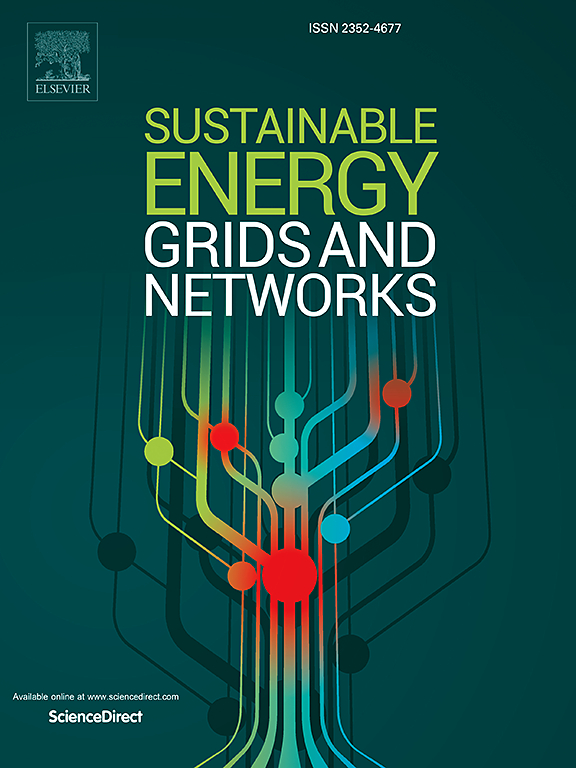简单分时电价下需求响应的峰值负荷效应
IF 5.6
2区 工程技术
Q2 ENERGY & FUELS
引用次数: 0
摘要
减少温室气体排放所需要的能源系统电气化的增加,给电力系统带来了高峰需求增加的挑战。需求响应可以减少峰值需求,但可接受性受到消费者对工作量、复杂性和缺乏控制的关注的限制。本研究评估了简单需求响应方案的潜力,该方案使用现有电价结构,适用于新西兰奥克兰市的中等收入住宅低压配电网络,并得出了适用于广泛情况的一般性结论。利用基于智能体的模型对真实变压器数据进行验证,模拟了50户家庭在分时电价结构下的电力需求,参与率在0 %和100 %之间变化。无需修改需求的使用时间计划可使家庭电力成本降低14% %,通过参与灾后恢复可进一步降低35% %。需求响应可以减少峰值电力需求高达5.7% %,但高水平的热水缸(或“热水器”)延迟加热可以增加峰值需求高达32.9% %。这些研究结果强调需要仔细设计DR规划,以避免意外的峰值需求增加,并确保公平获得DR福利。监管机构可以考虑促进dr技术的采用,以提高项目有效性并支持能源转型。本文章由计算机程序翻译,如有差异,请以英文原文为准。
The peak load effects of demand response with simple time-of-use pricing
Increasing electrification of energy systems, required for greenhouse gas emissions reductions, poses challenges for electricity systems from increased peak demand. Demand response can reduce peak demand, but acceptability is limited by consumer concerns about effort, complexity, and lack of control. This study assesses the potential of simple demand response programs using existing electricity pricing structures for a median-income residential low-voltage distribution network in Auckland, Aotearoa New Zealand, and draws generalised conclusions applicable across a broad range of circumstances. Using an agent-based model validated against real transformer data, the electricity demand in 50 households is simulated under time-of-use electricity pricing structures, with participation varied between 0 % and 100 %. Time-of-use schedules without modified demand reduces household electricity costs by 14 %, with further reductions of up to 35 % through DR participation. Demand response can reduce peak electricity demand by up to 5.7 %, but high levels of hot water cylinder (or “water heater”) delayed heating can increase peak demand by up to 32.9 %. These findings highlight the need for careful DR program design to avoid unintended peak demand increases and ensure equitable access to DR benefits. Regulators could consider facilitating the adoption of DR-capable technologies to enhance program effectiveness and support the energy transition.
求助全文
通过发布文献求助,成功后即可免费获取论文全文。
去求助
来源期刊

Sustainable Energy Grids & Networks
Energy-Energy Engineering and Power Technology
CiteScore
7.90
自引率
13.00%
发文量
206
审稿时长
49 days
期刊介绍:
Sustainable Energy, Grids and Networks (SEGAN)is an international peer-reviewed publication for theoretical and applied research dealing with energy, information grids and power networks, including smart grids from super to micro grid scales. SEGAN welcomes papers describing fundamental advances in mathematical, statistical or computational methods with application to power and energy systems, as well as papers on applications, computation and modeling in the areas of electrical and energy systems with coupled information and communication technologies.
 求助内容:
求助内容: 应助结果提醒方式:
应助结果提醒方式:


